Priory of Sion
Аненэрбе, операция Грааль
Одним из первых секретных проектов «Аненэрбе» была операция «Грааль». Ее идею подал лично Гитлер. Увлеченный романтическими легендами о Святом Граале и рыцарях Круглого стола, посвятивших себя его поискам, он мечтал о воссоздании чего нибудь подобного в современном мире. Собственно говоря, сам орден СС должен был стать воплощением ордена Круглого стола. Такой стол, к слову сказать, стоял в замке Вевельсбург – любимом детище Гиммлера – и использовался по самому, что ни на есть прямому назначению: за ним проходили собрания высших чинов СС и всевозможные мистические церемонии.
Но как Гитлеру удавалось сочетать увлечение Святым Граалем с ненавистью к христианству? Действительно, в его противоречивой натуре с трудом уживались две эти тенденции. «У меня не было никаких причин, – скажет фюрер впоследствии, – восхищаться всеми этими ничтожными рыцарями, обесчестившими свою арийскую кровь, следуя всем суевериям еврея Иисуса». Гитлер долго думал над разгадкой этого ребуса и, в конце концов, нашел выход: Грааль, говорил он, вовсе не является христианской святыней. Легенда о том, что это чаша с кровью Иисуса Христа, была придумана позднее. На самом деле Грааль гораздо более древнего происхождения, чем христианство, ему не менее десятка тысяч лет.
Nazis Attack Greenock In Search of Holy Grail
There is a long standing local story about a Nazi U-Boat which apparently managed to enter the Clyde in the midst of World War 2. Many believe that the submarine may have carried Nazi language specialist Otto Rahn, often associated with the Third Reich’s search for biblical artefacts (and the inspiration for the bad guy with the glasses in Raiders of the Lost Ark).
At the time of the U-Boat’s mission, Rahn was believed to be involved in looking for the Holy Grail. It is theorised that Rahn may have been entering the Clyde in order to make his way across country to Rosslyn Chapel, a church built by the Knights Templar and frequently linked with the Grail. However, if Otto Rahn's intended destination was indeed the Templar Church at Rosslyn near Edinburgh, why come in from the opposite end of the country via the heavily defended Clyde? It is entirely possible that if Otto Rahn was on the mysterious U-Boat, he fully intended to start his investigations on the West Coast. Certainly, he need not go as far east as Rosslyn to look into the mysterious Knights Templar; the area surrounding the Clyde has more than it's fair share of Templar connections.
Otto Rahn: To Rennes or not to Rennes?
Claims
“The Emerald Cup-Ark of Gold: the Quest of SS Lt Otto Rahn of the Third Reich”, Colonel Howard Buechner claimed that Otto Rahn visited the Corbières in 1937. This visit is not substantiated. However, there is little doubt in my mind that there is a strong connection between Rahn and Rennes-le-Château. I found these connecting links:
- Rahn’s link to the Cathars whom he loved with great passion;
- The war waged against the Cathars by the Church and the French King, a war of such ferocity that it brings into question the true nature of the cause for which the crusade against Albigensian and Cathar was really launched;
- Rennes-le-Château is seated in the Cathar heartland; Saunière discovering something linked to the “real” story of Catholic geopolitical involvement in the West over the centuries;
- The Vatican not speaking out against the Nazis until close to the end of WWII. What was the Church afraid of?
- Jules Massenet and his librettist Henri Cain for the opera: Don Quichotte and the metaphysical concepts of the necklace image and of the Island of Dreams;
Rennes-le-Chateau
Here, on the northern edge of the Pyrenees some 110 years ago, a Catholic priest named Bérengier Saunière became unbelievably wealthy overnight, seemingly after discovering something of immense value or significance in his church. He is said to have spent lavishly redesigning the tiny hill-top structure, building a strange belvedere tower called Tour Magdala and constructing a guest house known as Villa Bethania. He is also reported to have started acting oddly, erasing inscriptions on tomb stones, carrying out nocturnal excavations in both the church and churchyard, and receiving visitors totally beyond his standing as a parish curé in a rural part of southern France.
Is a deserted village the best clue to the whereabouts of the Grail Castle?
The Grail and the story of King Arthur is a myth, in the sense that things got added to it. The first Grail account did not mention the nature of the Grail, whereas Wolfram von Eschenbach particularly identified it with a black stone, speculated by some to be a meteor, by others to be a cousin of the Ka’aba stone.
The story of the Grail is like the myth of Jesus: From an interesting person, believed to have resurrected, he grew into the son of god, to the child of a virgin birth, its father the Holy Spirit. One aspect of the Grail mythology is the addition of the “Grail castle” to the original mythology.
Thule, the Priory of Sion, and Otto Rahn
Conspiracy buffs have long been interested in the Nazis for their occult connections, and in recent years the south of France has garnered interest for a quite different supposed occult conspiracy, yet the two are rarely connected.
In an interview with Peter Levenda, Dagobert’s Revenge Magazine hit on the figure of Otto Rahn, grail researcher, who, after having completed a book on the grail mysteries of south France for the Nazis mysteriously died in the Pyrenees. It was also pointed out that around the time that Otto Rahn, who was a skilled mountain climber, was in all probability killed by the Nazis, a figure by the name of Karl Maria-Wilgut, known as Weisthor, who was a mystic employed by the SS, was relieved of his duties and gradually retired from public life.
In the article, the story was left as one of the many mysterious deaths surrounding whatever lies around Rennes-la-Chateau, but the truth of the matter can indeed be reconstructed, and gives some good insight into the forces at work in these two realms.
Otto Rahn in Jones' Celtic Encyclopedia
b. February 18, 1904; Michelstadt, Germany.
d. March 13, 1939; Tyrolean Mts.
Poet, mystic, and Nazi researcher. Rahn was obsessed with two ideas--the Holy Grail and the Cathars, medieval French heretics; while in college, he had intended to write a dissertation on the hypothetical Kyot, the supposed troubador who gave Wolfram von Eschenbach the story of Parzival.
In 1929, he made a special trip to the Languedoc region of Southern France, a hotbed of Catharist activities in the thirteenth century. He began excavating at Montsegur, the last Cathar stronghold to fall to the Inquisition. Legend had it that the Cathars had a great treasure which was never found, but hidden deep in the mountainside. Rahn was convinced that this treasure was the Holy Grail, and he intended to find it.

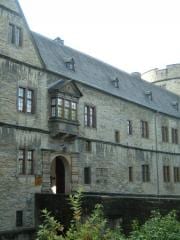
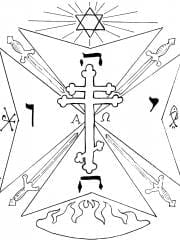
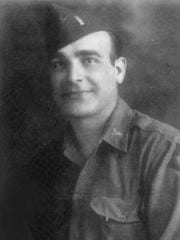
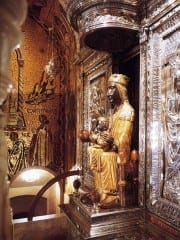
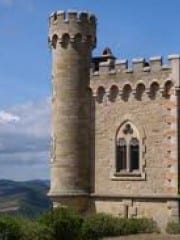
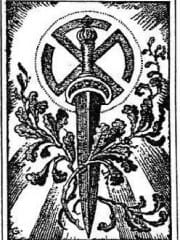
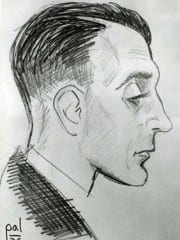
Последние комментарии
13 лет 41 неделя назад
13 лет 42 недели назад
13 лет 42 недели назад
13 лет 42 недели назад
13 лет 45 недель назад
13 лет 51 неделя назад